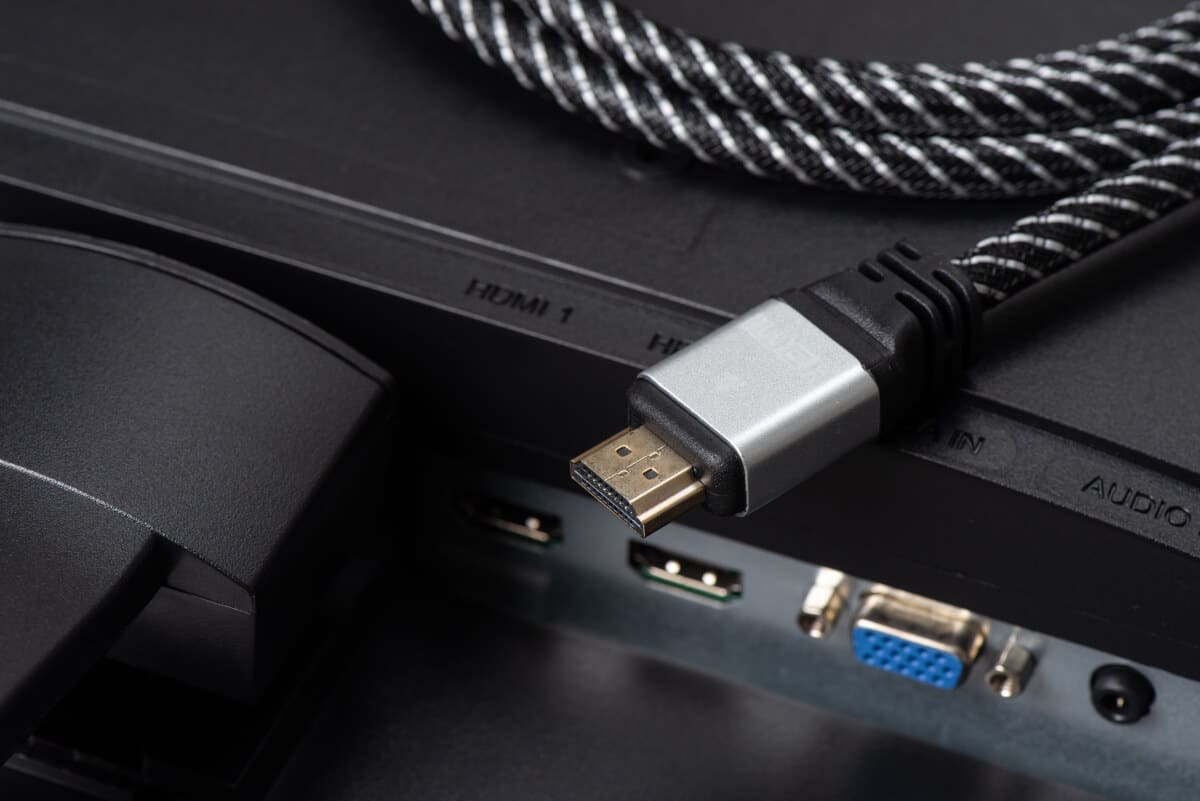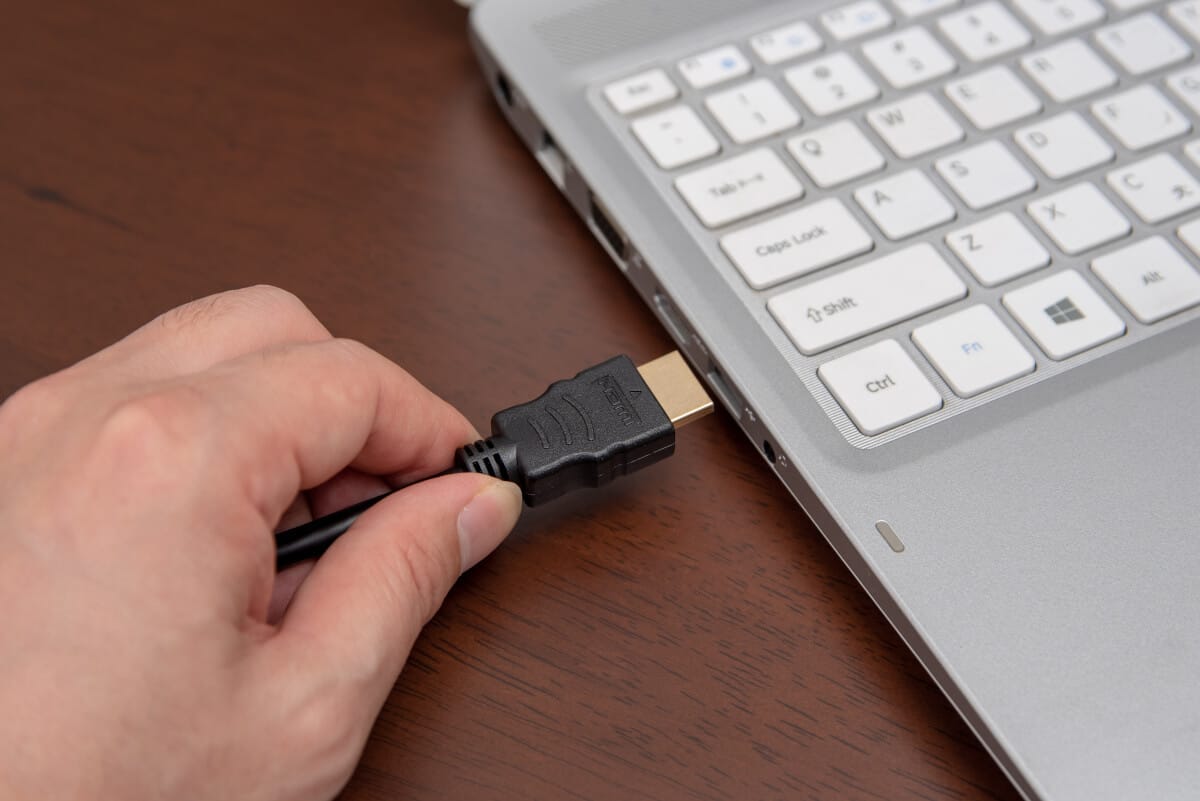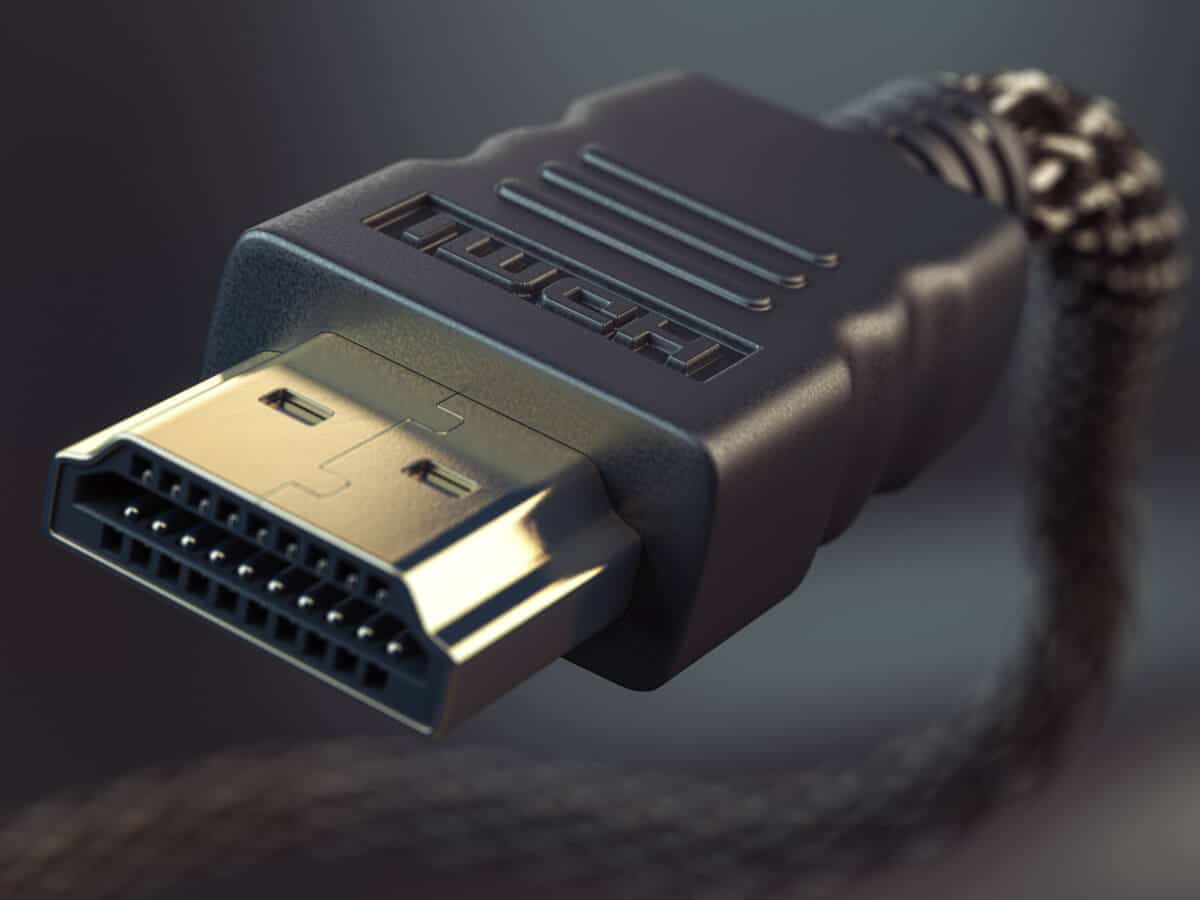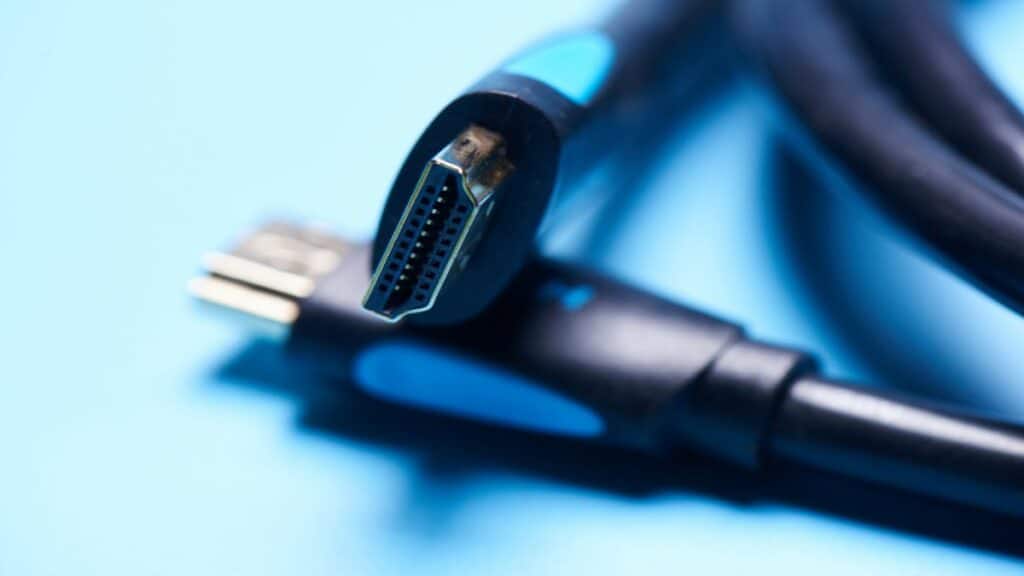the essentials in brief
HDMI cables vary in transfer rate, supported features, length, and price. Learn more about the different HDMI cables here...
For the TV connection at one Blu-rayplayer or a cable or satellite receiver A standard HDMI cable is usually sufficient.
When purchasing an HDMI cable, one should consider its compatibility with the device, the length required, the Quality transmission, supported features and price.
HDMI stands for High Definition Multimedia Interface – and that's exactly what it does. With such an HDMI cable you can connect your laptop, the DVD-Player, the external screen or the Beamer connect to a television or other end devices. But not only visual files, but also audio files can be transmitted in this way, and with the highest Resolution and quality: HD. In this blog post, learn about the differences between HDMI cables, which HDMI cable is right for you, and more about the quality of HDMI cables.
Contents
The history of the HDMI

HDMI as such was invented almost exactly 20 years ago and Distributed for the first time in 2004. This was the first time that such files, which have a two-channel audio signal, could be transmitted to a receiving device such as a television or beamer with just a single cable.
Version 2004, presented in 1.1, was also already able to DVD-Surround sound audio signals and similar transmitted. This included Dolby Digital and DTS signals. There were almost no limits to the home cinema of the time.
Version 2005 came in 1.2, which could transmit digital audio signals to end devices. The 2006 presented in 1.3 then enabled even faster and higher-resolution transmission, greater bandwidth. And thanks to a connection in mini format, a mini connector, a connection option for compact end devices that was not available before.
1.4 then enabled a connection between the Internet and the local network through an EthernetChannel. This was the first time that HDMI became so versatile and functional in everyday life for the masses. This version rendered colors with better saturation, making the image appear more lifelike. And from then on, the first 3D films were also played in the home.
9 years after the publication of version 1.1, in 2013 was then HDMI 2.0 brought on the market. It can do everything its predecessors could, only better and more. More audio and video streams and dynamic synchronization of audio to video. You no longer had to get upset that the mouth movements didn't match what you were hearing. In addition, the possible resolutions and formats of audio and video have been expanded so that every user gets their money's worth.
The 2017 introduced 2.1 is an absolute mass favourite: not only the support of games, so that you can also gamble with a group, but also the even faster transmission thanks to better bandwidth characterize this version.
Tip: When buying an HDMI cable, you should make sure that it supports the necessary functions for your device, but also does not cost more than necessary. More expensive cables are not always better than cheaper ones.
The different types of HDMI

Not all HDMI are created equal. Because there isn't just that an HDMI connector, but even 5. These are type A, type B, type C, type D and type E.
A and B have the same designation: standard HDMI. But their possible use differs, since the plugs differ in size by almost 7 mm and type A is a so-called single link system and Type B a dual link.
The Type c is called mini-HDMI for a very clear reason: the connector of this single link is only 10 mm x 2.5 mm, which is in stark contrast to the 21,1 mm x 4,5 mm connector of type B.
Type D is even smaller, namely just 6,5 mm x 4,5 mm, but as a single link it is in no way inferior to type C.
the last guy Type E, is quite an outlier, calling itself Automotive HDMI, as this 17mm x 6,1mm connector is designed for use in vehicles such as cars. As a result, this plug offers a better grip, so that nothing slips or comes loose even on bumpy road conditions.
In addition to a simple cable, there is also the so-called HDMI splitter, which gives you an even wider range of applications.
Note: Avoid kinking or bending your HDMI cable, especially at the connectors, as this can affect transmission or even cause the cable to fail completely
Differences in HDMI cables
| Type | Description |
|---|---|
| Type | Description |
| DefaultHDMI | This is the most commonly used HDMI cable and supports most of the features of HDMI 1.4 and 2.0. It is able 1080p-Transmit video and audio with a sampling rate of up to 192 kHz. |
| High-Speed HDMI | Capable of handling higher bandwidth requirements, this cable is capable of carrying up to 4K video and audio with a sampling rate of up to 1536kHz. It is also capable of transmitting 3D content and HDR (high dynamic range). |
| Premium High Speed HDMI | This is the best option for 4K Ultra HD video and supports resolutions up to 10K. It's also capable of streaming HDR content and higher frame rates up to 120Hz. |
| HDMI with Ethernet | This cable offers all the functionality of a High Speed HDMI cable, but with the addition of an Ethernet connection. This allows network data to be transmitted over the same cable used to transmit video and audio. |
| Mini HDMI | This is a smaller version of the standard HDMI cable and is commonly used in devices such as tablets and digital cameras. It supports the same functions as the standard HDMI cable but is more compact. |
| micro HDMI | This is the smallest version of the HDMI cable and is commonly used for smartphones and action cameras. It supports the same functions as the standard HDMI cable but is even more compact than the Mini HDMI cable. |
The quality of an HDMI cable

If you are looking to buy an HDMI cable, you may be wondering what quality You need to get the best audio and video experience. The quality of an HDMI cable is an important factor for optimal image and video transmission Ton .
There are basically four different HDMI cable types:
Standard HDMI, High-Speed HDMI, Premium High-Speed HDMI and HDMI with Ethernet. Each of these cable types has different bandwidth requirements and supports different features. A Standard HDMI cable for example, is capable of transmitting 1080p video and audio with a sampling rate of up to 192 kHz, while a premium high-speed HDMI cable supports resolutions up to 10K.
It's important to note that more expensive HDMI cables aren't necessarily better than cheaper cables. For example, if you need a cable to connect a TV to a Blu-ray player, a standard HDMI cable can do just fine. However, if you own a 4K TV and want to play HDR content, you should get one High Speed HDMI Cable or a Premium High Speed HDMI Cable into account to ensure optimal image quality.
It's also important to note that an HDMI cable that supports a specific feature does not necessarily support every device. So always check the specs of the device and cable to make sure they are compatible.
Tip: To get the best performance from your HDMI cable, make sure it's connected correctly and have the latest drivers and firmware updates installed for your device.
The right cable for your needs
So how do you find that? correct HDMI cable for you? All you really need to know is what you will usually need the cable for. Monthly movie nights with the troupe? Or for public viewing in the garden?
Here is a table listing different HDMI cable usage scenarios and what type of cable is recommended for each scenario:
| usage scenario | Recommended HDMI cable |
|---|---|
| Connecting a TV to a Blu-ray player | DefaultHDMI |
| Connection a laptop to a TV | DefaultHDMI |
| Connecting a TV to a cable or satelliteReceiver | DefaultHDMI |
| Connecting a gaming PC to a TV or monitor | High-Speed HDMI |
| Connecting a 4K TV to a 4K Blu-ray player | High Speed HDMI or Premium High Speed HDMI |
| Connection from a 4K TV to a 4K streaming device | High Speed HDMI or Premium High Speed HDMI |
| Connecting a home theater system to a TV or projector | High Speed HDMI or Premium High Speed HDMI |
| Connection from a laptop or tablet to an external monitor | Standard HDMI or Mini HDMI |
Summarized again

Choosing the right HDMI cable depends on various factors such as the resolution of the screen, the supported features of the device and the usage scenario. A Standard HDMI cable is sufficient for most applications, while High Speed HDMI Cables or Premium High Speed HDMI Cables are recommended for more demanding applications such as 4K video and HDR content.
However, it is important to keep in mind that more expensive HDMI cables are not necessarily better than cheaper cables. Always check the specifications of the device and cable to make sure they match Compatible are and one optimal performance .
Cables
Did you know that the longest cable in the world crossing the Atlantic is the fiber optic cable MAREA and has a length of 6.600 kilometers? Completed in 2018, it connects Virginia in the US with Bilbao in Spain.
FAQ – HDMI cables
Except in the case that the connector is wobbly in the device, a breakage becomes visible shortly after purchase or very clear traces of glue between the cable and the connector cover are visible, this is unfortunately not always visible to the naked eye.
The answer is: marketing. People subconsciously associate gold with quality and value. And the seller plays with this phenomenon in order to sell the more expensive models with the same quality.
Usually yes. This means that every model from 1.4 is able to play 3D. If you buy the latest model, you can expect all the benefits of every other previous version.



